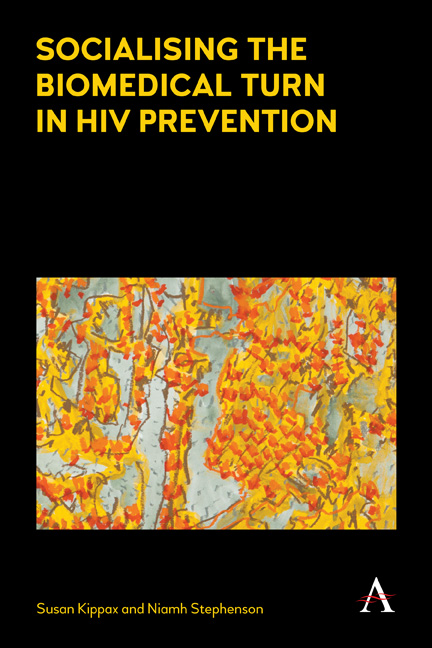Book contents
- Frontmatter
- Dedication
- Contents
- List of Figures
- List of Tables
- Acknowledgements
- Introduction
- Part I EFFECTIVE HIV PREVENTION
- Part II SOCIAL TRANSFORMATION
- 4 The Biomedical Narrative of HIV/AIDS
- 5 Risk and Vulnerability
- 6 Social Practices of Communities
- 7 Researching Social Change, Working with Contingency
- Notes
- References
- Index
6 - Social Practices of Communities
from Part II - SOCIAL TRANSFORMATION
Published online by Cambridge University Press: 17 June 2017
- Frontmatter
- Dedication
- Contents
- List of Figures
- List of Tables
- Acknowledgements
- Introduction
- Part I EFFECTIVE HIV PREVENTION
- Part II SOCIAL TRANSFORMATION
- 4 The Biomedical Narrative of HIV/AIDS
- 5 Risk and Vulnerability
- 6 Social Practices of Communities
- 7 Researching Social Change, Working with Contingency
- Notes
- References
- Index
Summary
This chapter offers a way beyond the apparent impasse between (individualistic) HIV-prevention efforts focused on individual risk behaviours and attempts to target the social drivers of HIV transmission, which fail to adequately account for collective agency. We have argued that there is much to be elucidated between the two poles of ‘individual’ and ‘social structure’ and, furthermore, unless we develop our understanding and ways of working with this middle ground of social practices we cannot fully grasp how social change occurs in ways that matter for HIV prevention. Hence, here we turn to this middle ground and examine how social practices can transform social structures, including norms – in more or less useful ways for HIV prevention – and consider when and how social practice might fail to trigger much change at all.
Our point of departure is that persons or people typically act as members of collectives. They are essentially social beings (Harré, 1979). People take up the social practices that make sense to others (that is, not only to themselves) in their group or community: for example, as condom use does in many gay communities. Such practices are produced in the social relations among people: it is in these relations that people's actions acquire meaning and norms are appropriated and sustained. As Harré (1979, 125) argues, people's actions are directed to practical social ends, to maintaining the material and social world, and they are also directed to expressive presentations to show what sort of person they are. For instance, for many in gay communities in the 1980s and early 1990s, condoms were used to enable ‘safe sex’, and they were also used to demonstrate one's concern for others and one's belonging to gay community (Weeks, 1998). If condom use becomes the norm within a particular group, it may be difficult to engage in unprotected sex.
Using condoms, reducing the number of one's sexual partners, using sterile needles and syringes and taking prophylactic drugs are all social practices: these practices, which comprise a sequence of actions that constitute ‘sexual engagement’ or ‘injection drug use’, are understood with reference to social norms, rules and conventions, that is, social structures. And these social structures enable people to act, as well as constrain the actions of people.
- Type
- Chapter
- Information
- Socialising the Biomedical Turn in HIV Prevention , pp. 109 - 128Publisher: Anthem PressPrint publication year: 2016



